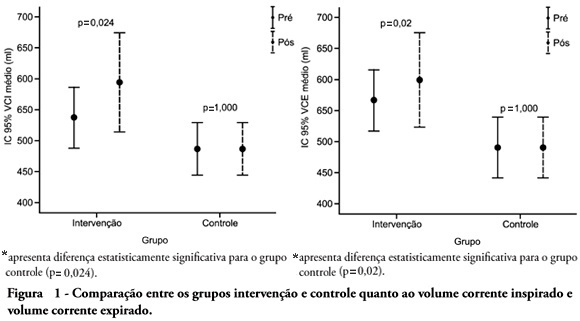You searched for:"Laura Jurema dos Santos"
We found (3) results for your search.-
Original Articles
Patient functionality and walking speed after discharge from the intensive care unit
Rev Bras Ter Intensiva. 2019;31(4):529-535
Abstract
Original ArticlesPatient functionality and walking speed after discharge from the intensive care unit
Rev Bras Ter Intensiva. 2019;31(4):529-535
DOI 10.5935/0103-507X.20190066
Views0ABSTRACT
Objective:
To measure and compare the functionality of patients after discharge from the intensive care unit and at the time of hospital discharge.
Methods:
Quantitative study of a prospective cohort performed between August of 2016 and December of 2017 at a university hospital. A 10-meter walk test was performed at 2 timepoints: after discharge from the intensive care unit and prior to hospital discharge. The data were analyzed using Student’s t-test and Pearson or Spearman correlation. Statistical Package for Social Science (SPSS) version 21.0 was used for the analysis, and p ≤ 0.05 was adopted as the level of significance.
Results:
Forty patients, with a mean age of 57.1 ± 12.2 years and with a predominance of males (60%), were evaluated. For the post-intensive care unit test, a mean speed of 0.48m/s was observed, and for the pre-hospital discharge test, there was an increase to 0.71m/s, evidencing functional evolution during the hospital stay (p < 0.001).
Conclusion:
There was significant improvement in walking speed at the time of hospital discharge when compared to the walking speed at the time of intensive care unit discharge.
Keywords:Critical careEarly ambulationExerciseIntensive care unitsMuscle strengthPatient carePatient dischargeWalk testSee more
-
Original Articles
Effects of manual hyperinflation maneuver associated with positive end expiratory pressure in patients within coronary artery bypass grafting
Rev Bras Ter Intensiva. 2010;22(1):40-46
Abstract
Original ArticlesEffects of manual hyperinflation maneuver associated with positive end expiratory pressure in patients within coronary artery bypass grafting
Rev Bras Ter Intensiva. 2010;22(1):40-46
DOI 10.1590/S0103-507X2010000100008
Views1OBJECTIVE: To verify the effects of manual hyperinflation maneuver associated with positive end expiratory pressure in coronary artery bypass grafting patients. METHODS: This was a randomized trial, conducted from August 2007 to July 2008 in the intensive care unit of the Hospital Luterano (ULBRA). The patients were divided in the groups intervention – with manual hyperinflation plus positive end expiratory pressure – and controlThe ventilatory variables were measured before and after the manual hyperinflation. The t Student’s test was used for independent and paired samples as well as Fisher’s exact test and McNemar’s Chi-square test with 0.05 significance level. RESULTS: Eighteen patients were included. The mean age was 64± 11 years and 55.6% were female. The inspired tidal volume was 594± 112ml in the intervention group and 487± 51ml in the control group (p=0.024) and the expired tidal volume was 598± 105ml in the intervention group and 490± 58ml in the control group (p=0.02). The mean pre-maneuver static pulmonary compliance in the intervention group was 41.6± 12.1 ml/cmH2O and post maneuver it was 47.4± 16.6 ml/cmH2O (p=0.03). There was no significant between groups difference in the following variables: oxygen peripheral saturation, oxygen arterial pressure, extubation time and radiological changes. CONCLUSION: The results show that the manual hyperinflation associated with positive end expiratory pressure maneuver trends to promote increased lung volumes and static compliance, however these findings require further confirmation.
Keywords:Breathing exercisesMyocardial revascularizationPhysical therapy modalitiesPositive pressure respirationRehabilitationRespiration, artificialRespiratory therapySee more
Search
Search in:
KEY WORDS
Case reports Child Coronavirus infections COVID-19 Critical care Critical illness Extracorporeal membrane oxygenation Infant, newborn Intensive care Intensive care units Intensive care units, pediatric mechanical ventilation Mortality Physical therapy modalities Prognosis Respiration, artificial Respiratory insufficiency risk factors SARS-CoV-2 Sepsis





